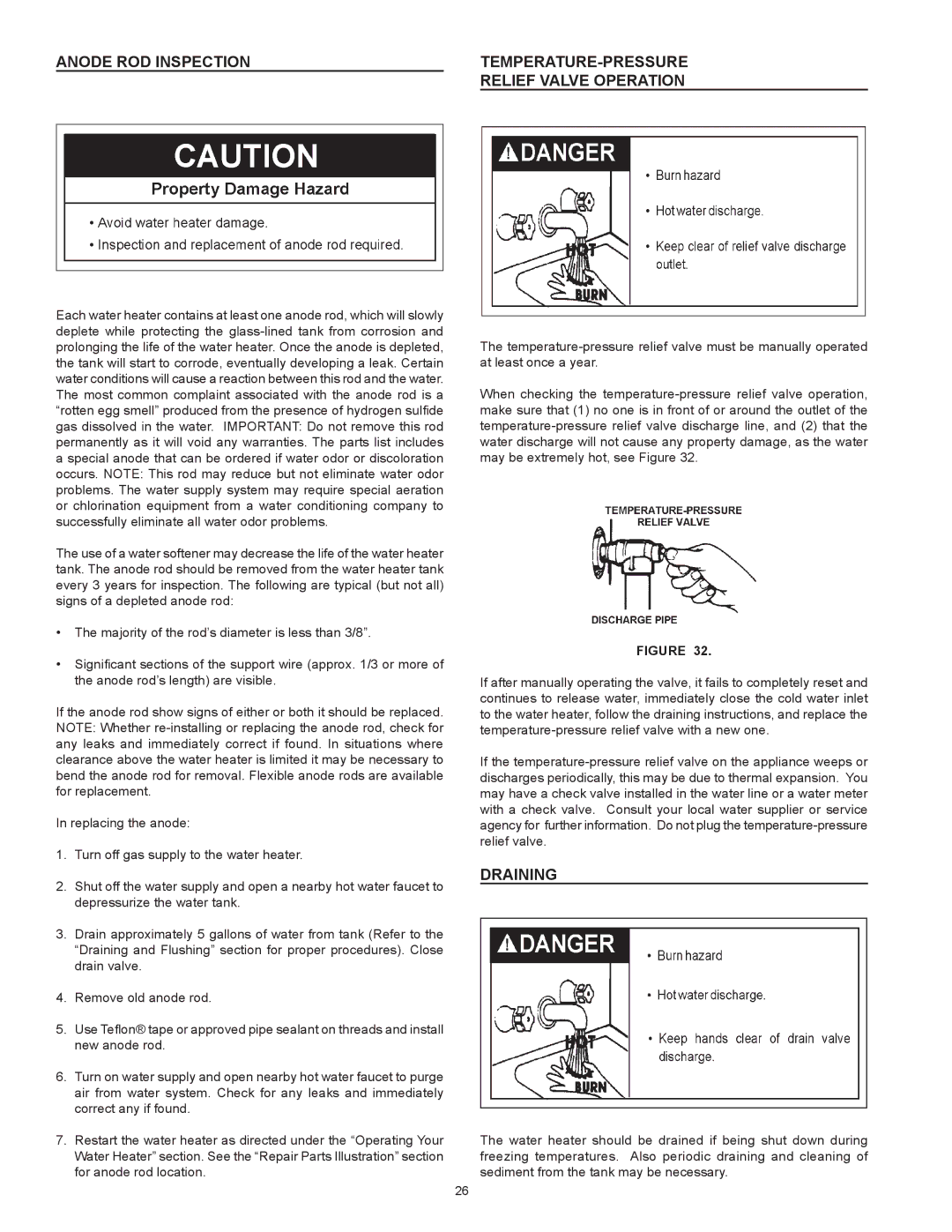
ANODE ROD INSPECTION
Each water heater contains at least one anode rod, which will slowly deplete while protecting the
The use of a water softener may decrease the life of the water heater tank. The anode rod should be removed from the water heater tank every 3 years for inspection. The following are typical (but not all) signs of a depleted anode rod:
•The majority of the rod’s diameter is less than 3/8”.
•Significant sections of the support wire (approx. 1/3 or more of the anode rod’s length) are visible.
If the anode rod show signs of either or both it should be replaced. NOTE: Whether
In replacing the anode:
1.Turn off gas supply to the water heater.
2.Shut off the water supply and open a nearby hot water faucet to depressurize the water tank.
3.Drain approximately 5 gallons of water from tank (Refer to the “Draining and Flushing” section for proper procedures). Close drain valve.
4.Remove old anode rod.
5.Use Teflon® tape or approved pipe sealant on threads and install new anode rod.
6.Turn on water supply and open nearby hot water faucet to purge air from water system. Check for any leaks and immediately correct any if found.
7.Restart the water heater as directed under the “Operating Your Water Heater” section. See the “Repair Parts Illustration” section for anode rod location.
Temperature-Pressure
Relief Valve Operation
The
When checking the
FIGURE 32.
If after manually operating the valve, it fails to completely reset and continues to release water, immediately close the cold water inlet to the water heater, follow the draining instructions, and replace the
If the
Draining
The water heater should be drained if being shut down during freezing temperatures. Also periodic draining and cleaning of sediment from the tank may be necessary.
26
